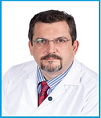Day 2 :

Biography:
Abstract:
Keynote Forum
George J. Bitar
Bitar Cosmetic Surgery Institute, USA
Keynote: Ethnic Rhinoplasties: A 16 year experience

Biography:
Abstract:
Keynote Forum
Santosh Kumar Swain
Siksha O Anusandhan University, India
Keynote: Primary laryngeal tuberculosis: Experiences at a tertiary care teaching hospital of India
Time : 10:30-11:00

Biography:
Abstract:
- Head and Neck Surgery and Oncology| Oral and Maxillofacial surgery | Otolaryngology | Craniofacial surgery | Surgery For Nasal Disorders | Dentistry
Location: Bleroit 1

Chair
Mark Shikowitz
The Feinstein Institute of Medical Research, USA

Co-Chair
George J. Bitar
Bitar Cosmetic Surgery Institute, USA
Session Introduction
Naser Azmi Khayat
Arab American University, Palestine
Title: Diagnosis and treatment on temporomandibular disorders and Sleep apnea

Biography:
Abstract:
Robert J. Wood
Gillette childrens speciality health care, USA
Title: Classic open craniofacial surgery without transfusion: A Novel multi-modal approach

Biography:
Abstract:
Yasser Mohamed Elsheikh
Menoufia University, Egypt
Title: Submandibular duct rerouting as a lay way for saliva control

Biography:
Abstract:
Biography:
Abstract:
Yu-Tsai Lin
Kaohsiung Chang Gung Memorial Hospital, Taiwan
Title: Endoscopic nasopharyngectomy for recurrent nasopharyngeal carcinoma: Experience of Kaohsiung Chang Gung Memorial Hospital in Taiwan

Biography:
Abstract:
Biplob Bhattacharyya
Siksha 'O' Anusandhan University, India
Title: Management of fish bone impaction in throat: Experiences at teaching hospital in India

Biography:
Abstract:
Elizabeth Mathew Iype
Regional Cancer Center, Thiruvananthapuram, India
Title: Small cell neuroendocrine carcinoma of the nasal cavity and paranasal sinuses: Role of surgery

Biography:
Abstract:
James Burns
Harvard University, USA
Title: Transoral angiolytic laser surgery for early glottic carcinoma
Biography:
Abstract:
Sajidxa Marino
Central University of Venezuela, Venezuela
Title: Diode’s laser for in office endoscopic surgery center

Biography:
Abstract:
G Dave Singh
Vivos BioTechnologies, USA
Title: Non-surgical improvement of the upper airway for sleep disordered breathing: 5 year follow up

Biography:
Abstract:
Sei-Young Chun
Dohwa Good Morning Dentistry, South Korea
Title: 3D digital dental implant using CBCT, intra oral scanner and 3D printer

Biography:
Abstract:
- Otology | Cleft-Lip and Palate Repair | Rhinology | Autogenous Bone Grafting for Orbital Floor Fracture | Hearing Impairment and Deafness Causes | Craniofacial Congenital Syndromes
Location: Bleroit 1

Chair
Alessandro Bucci
Hospital of Senigallia, Italy

Co-Chair
Santosh Kumar Swain
Siksha ‘O’ Anusandhan University, India
Session Introduction
Anas Ghonem Alhariri
SEHA Facility, UAE
Title: Laryngo-Pharyngeal Reflux Disease (LPRD) in pedia patients

Biography:
Abstract:
Jumana Hussain
Al- Farwaniya Institute, Kuwait
Title: A case of large deep fibrolipoma in the left subclavicular region that compromised the branchial plexus and thoracic duct: A case report
Biography:
Jumana Hussain is presently working at Al- Farwaniya Institute, Kuwait. She has graduated in Otolaryngology
Abstract:
Li-Ang Lee
Linkou-Chang Gung Memorial Hospital, Taiwan
Title: IBVR: Image-Based Virtual Reality for innovative teaching and learning in ORL-HNS teaching clinicsx

Biography:
Abstract:
Biography:
Abstract:
Sreesyla Basavaraj
St Mary’s Hospital, UK
Title: Current trends in pathophisology of Meneire’s disease & surgical management

Biography:
Abstract:

Biography:
Abstract:
Biography:
Abstract:
Ravjit Singh
Prince of Wales Hospital, Australia
Title: Role of neck dissection in patients with high-grade salivary carcinomas
Biography:
Abstract:
Rijuneeta Gupta
Post Graduate Institute of Medical Education and Research, India
Title: Role of neutrophil lymphocyte ratio (NLR) as a predictor of disease severity in nasal polyposis (NP) and allergic fungal rhinosinusitis (AFRS)
Biography:
Rijuneeta Gupta is currently Professor in the Department of Otolaryngology and HNS at the Post Graduate Institute of Medical Education and Research, Chandigarh, India.
Abstract:
Gunjan Dhasmana
Himalayan Institute of Medical Sciences, India
Title: Evaluation of hearing in patients with Type 2 diabetes Mellitus

